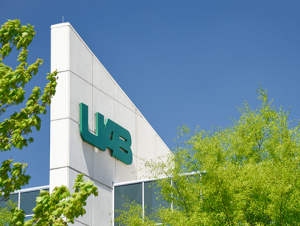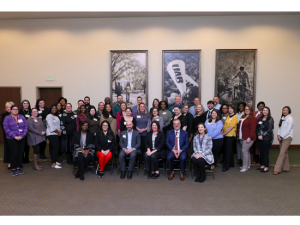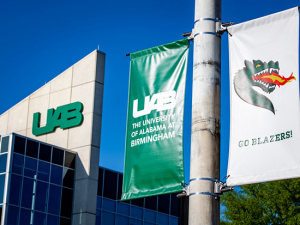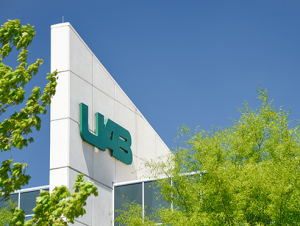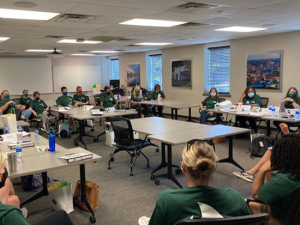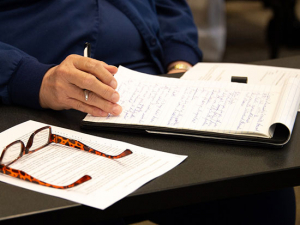UAB’s campus continues to evolve and grow, and more construction projects are on the horizon.
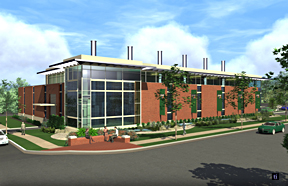 One of the largest — and most crucial — will be the District Steam System Project, which includes the construction of a state-of-the-art steam-generation plant and steam distribution and condensate recovery network. Also, the program includes purchase of the existing Alabama Power Co. Southside steam plant and distribution system, which will be decommissioned in mid-2013 due to age and condition.
One of the largest — and most crucial — will be the District Steam System Project, which includes the construction of a state-of-the-art steam-generation plant and steam distribution and condensate recovery network. Also, the program includes purchase of the existing Alabama Power Co. Southside steam plant and distribution system, which will be decommissioned in mid-2013 due to age and condition.
The $69 million project was approved by the University of Alabama System Board of Trustees this past June. The new steam plant will be located at the corner of Sixth Avenue South and 13th Street, across from Bartow Arena and adjacent to the existing Alabama Power plant. The new network will replace the existing steam-distribution system and construction of a new condensate-return system will provide high-quality steam service to the campus, research and medical center facilities, including the VA Hospital, Callahan Eye Hospital and Southern Research Institute when Alabama Power discontinues its steam operation in February 2013.
“We’ve been conducting feasibility studies and doing due diligence on this project for more than two years now,” says Jerry Corvin, UAB senior project manager. “It’s a very complex project, and there is a very tight time frame that we are working within for design and construction. The target date is Feb. 12, 2013, for the transition, and right now, we’re on target.”
The project comprises four components. The first is the steam-production plant to be built. The second and third elements are a distribution system with north and south loops.
The final component of the project is the construction of a condensate-return system. A condensate-recovery system will be constructed in each building for which steam service is provided. The condensate will be collected and piped back to the plant to be used again, saving the university as much as 15 to 20 percent in steam-generation costs.
“Alabama Power did not have a condensate-return system, which means there was thermal and water waste,” Corvin says.
“When we recover the condensate, we recover that as water loaded with a thermal value of up to 180 degrees. It gets sent back to the plant and can be used with regular city domestic water and heated back up to 212 degrees much faster. That’s where the project becomes green, and it will greatly reduce energy costs.”
More than 20,000 linear feet of piping — the equivalent of almost four miles — will be used, and Corvin says the enormity of the construction will affect campus traffic on foot and by vehicle.
Approximately 55 to 60 percent of the project will be confined to campus property. Some sidewalks and streets will be affected, including some of the newly paved streets.
“Our plan is to repair — not patch — the street cuts,” Corvin says. “Were going in with a very detailed engineering correction to the excavation to put the asphalt pavement back properly. There likely will be some traffic issues until we get repairs made properly, but we are planning to phase those in as quickly as we can after piping is installed.”
Construction begins in 2011
The project now is in the design phase. KPS Group of Birmingham is the project architect. IC Thomasson of Nashville is the design engineer. The project will be bid in multiple packages, with Corvin’s team providing construction management. The first bid packages are expected to be out later this fall for mobilization in spring 2011.
The first boots-on-the-ground construction activity is planned for the south loop distribution system, with construction mobilization scheduled to begin in May 2011. Construction of the physical plant across from Bartow is scheduled to commence in June 2011, and the north loop distribution system construction will begin in July 2011.
The target date for completion and commissioning activities is September 2012.
“Then we’ve got a bit of high-level loading and integrity testing of the systems for transition on Feb. 12, 2013,” Corvin says.
Corvin has been in construction for 45 years, completing heavy construction, buildings, pipelines and refineries domestically and abroad in the Far East and the Middle East.
He has spent the past eight years at UAB and his team, including field project manager James Gilliam, built and managed the design and construction of the Shelby Building, Research Support Building and the Southeastern Bio-Safety Lab — almost $200 million worth of construction. In addition, the steam project management team will include Susan Zumbado and James Guyton as project managers for the steam plant and condensate recovery systems.
Corvin says the steam project ranks high on his list of construction challenges, particularly become of its complexity.
“Mostly because this is an urban campus,” Corvin says. “I’ve done miles of pipeline, plant processing and oil pipelines, but it’s different when you cram four miles of it into a square encompassing about eight square blocks.
“I can promise you we’re trying to plan it to minimize the inconvenience,” he says. We will have a communication plan to update everybody frequently on our construction activities to help faculty, staff and students plan accordingly.”






